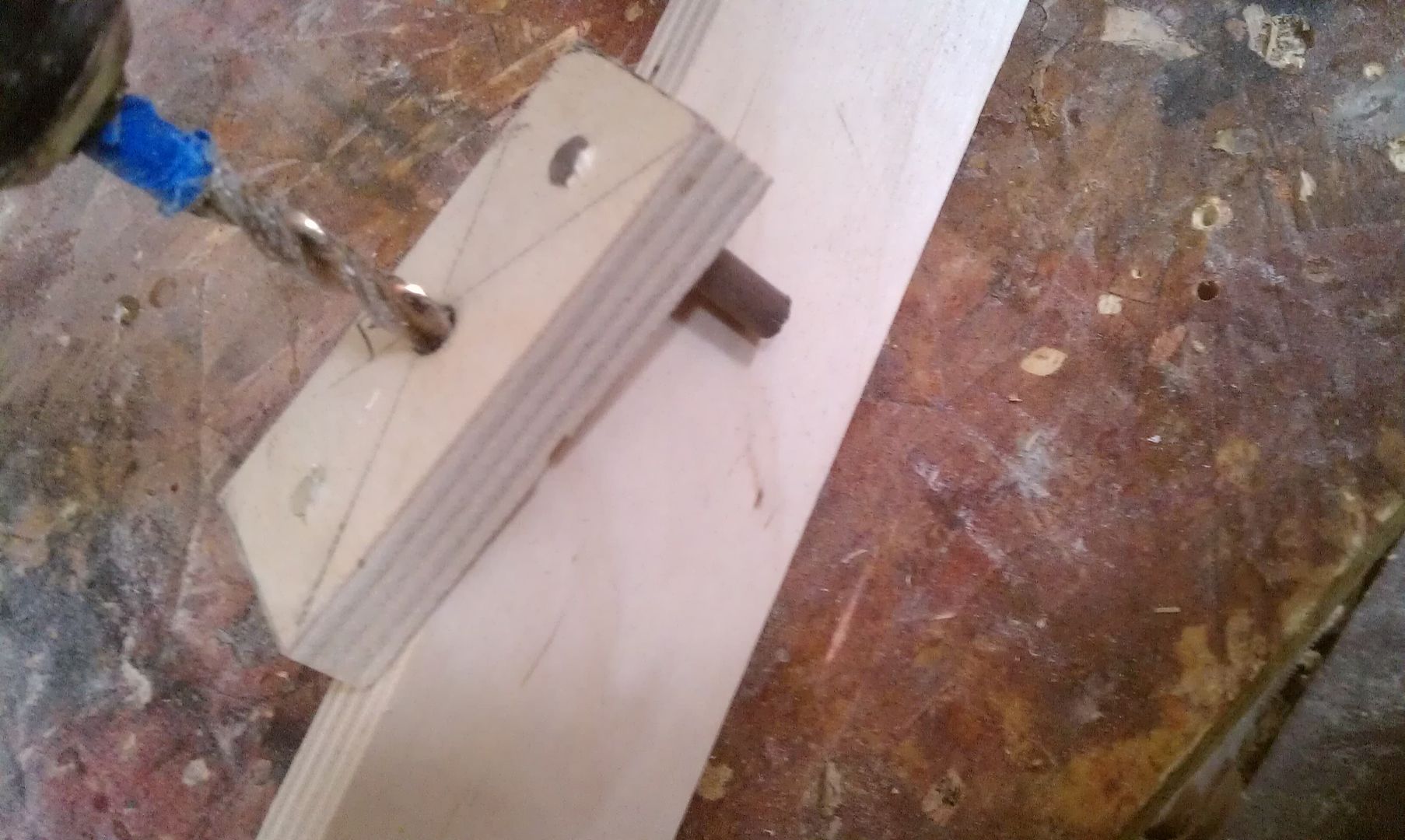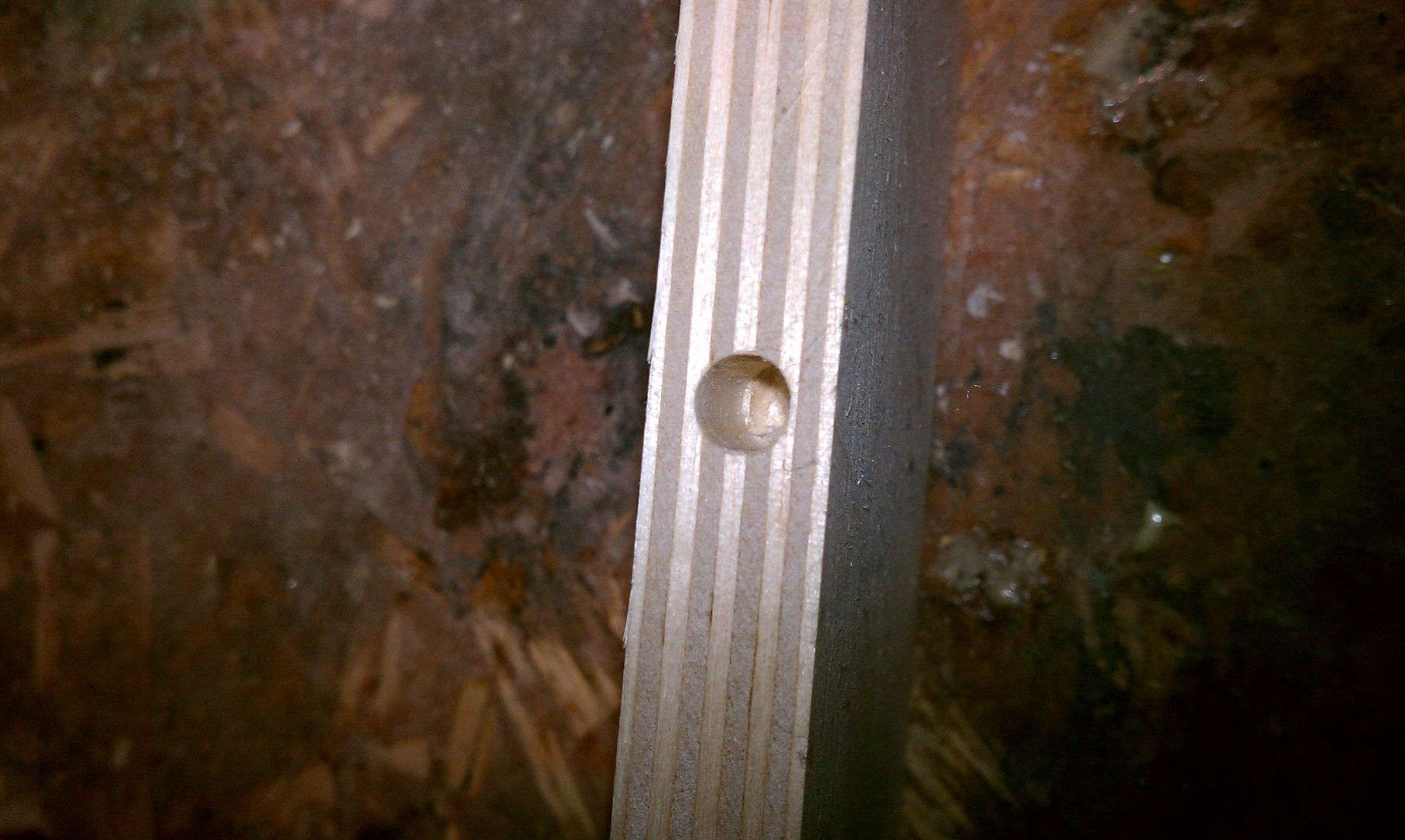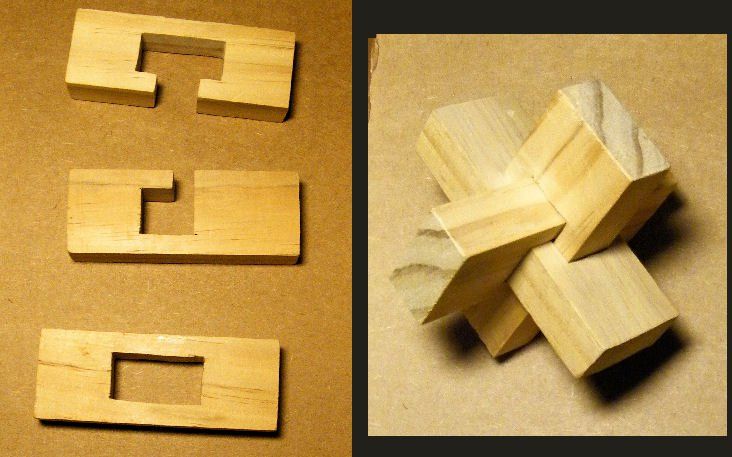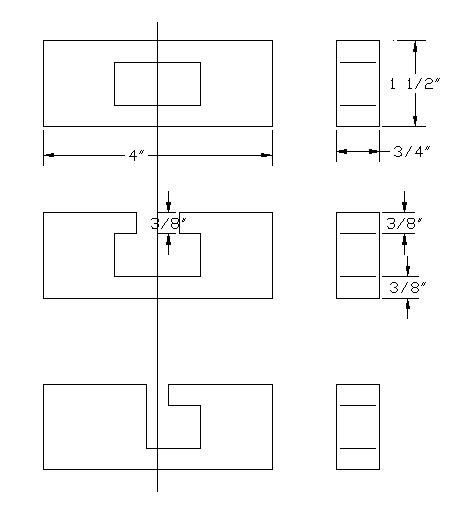Wednesday, March 5, 2014
Make a wood doormat and make money
Door mats are expensive!
But what caught my interest the most were the prices being charged: typically between $100 and $200 each.

After many sketches, I finally came up with an elegant way to build this. It solves the problem of screwing in planks, and allows for expansion and contraction. But the best part: the board cost me $12. The only other supplies needed are two steel rods and 30 flat washers from the plumbing department. Total cost: $24. Ill bet you could sell these for over $100. If you use teak, you could double the price. Hey, why not try making some extra cash?
How to Remove Old Finish From Furniture
General Rules for Removing Old Finish
1. Do nothing that will harm the original surface unless the piece is to be painted.
2. If you plan to replace the old finish with a clear type, all old finish must be removed so the new will hold properly.
3. When removing old paint it is not only permissible but acceptable to most collectors that the marks of wear through the years, as well as traces of color from the old paint be allowed to remain so that they will show through the new finish. Traces of old paint add interest to the piece by their variations of color, and are evidence of age. Old paint however, should not be left on in thick patches or blotches.
4. For final cleaning, after using a remover, use a cabinet scraper or knife blade on joints, corners, and angles on flat surfaces. Use steel wool to clean out carvings, turnings, mouldings etc.
5. If the old finish is shellac, you dont need a paint and varnish remover. It can be taken off with denatured alcohol and steel wool.
Selecting Your Paint Remover
Commercial removers are solvents rather than corrosives. They act more slowly on older paints than on new, but they are the only materials that can be used safely. They attack the material such as linseed oils used in paint, or the resins in shellac, varnish, and lacquer. It wont injure a surface by burning it or leaving marks and wont be harmful to glue or raise the grain of the wood. They contain no water and may be used on veneered surfaces without causing the veneer to loosen. When used properly and washed off, solvent-type paint removers leave the surface clean. Dislodging layers of old paint or varnish isnt difficult, but patience, time, and-following the directions on the container are required.
How to Remove Old Finishes
Dislodging layers of old paint or varnish isnt difficult, but it takes patience, time, ans perseverance. Here are some basic directions for using paint remover.
1. Place the piece to be worked on over layers of old newspaper in good strong light, and if possible, with the top surface in a horizontal position. Avoid working in cold temperatures below 68 degrees F--cold slows down the action of removers.
2. Shake the remover thoroughly, pour a small amount into a small can and apply thickly with a full brush in one direction. Do not rebrush.
3. Let the remover stand for a period of from 10 to 20 minutes, or until the paint or varnish lifts.This is indicated by a crinkling of the surface. Do not let the remover dry. If it begins to dry, apply an additional coat and wait for it to act.
4. When the surface covering has lifted, remove it with a dull putty knife that has the corners rounded off. Remove the accumulation of remover and finish and wipe the knife on a piece of old newspaper.
5. Wipe off as much of the remaining finish as possible using burlap squares.
6. Scrub the surface with a small brush dipped in denatured alcohol.
7. Wipe off with several clean cloths.
8. Rub the surface with steel wool dipped in denatured alcohol.
9. Wipe with cloths dipped in alcohol. This not only cleans the traces of remover from the surface but neutralizes its further action. Follow by wiping with clean cloths dipped in turpentine or paint thinner.Then wipe with dry rags. This will remove any remaining wax or silicone polish that may have been used on the finish in the past. 10. Allow to dry thoroughly for at least 24 hours.
Removing Deeply Buried Paints
A deeply buried paint can be removed entirely or partially by a simple procedure. This is paint usually left after you have removed the previous cotes with remover or light scraping. Because its so simple its worth trying.
1. Apply a liberal coat of shellac with a brush and let it dry for at least 24 hours.
2. Use the remover as previously directed. All or part of the buried paint will come off with the shellac. Be sure all traces of the remover is gone and the surface is completely dry before applying a new finish.
"visit http://www.kewoodworking.com "
Article Source: [http://EzineArticles.com/?How-to-Remove-Old-Finish-From-Furniture&id=6687448] How to Remove Old Finish From Furniture
The power of woodworking
Wow! Look at all the WWMM projects Dan has made:

- Drew Shorts mallet
- Brian Grellas mallet
- John Heiszs mallet
- Jon Peters mallet
Tuesday, March 4, 2014
Dowel center finding jig and some Christmas woodworking ideas





Local Meetups
Long-time friend of the show, Bill Akins, emailed me recently with a few pictures from a recent meetup at Highland Woodworking in Atlanta, GA. In the picture are Aaron Marshall, Chris Adkins, Todd Hyman, Rufus Carswell, Tray Akins and Bill Akins. What a happy-looking bunch! Although its hard not to have a smile on your face when your walking around Highland. Thanks to Chris for setting the meeting up!
Meetups like this one happen on occasion and I thought it would be nice to give folks an easy way to plan these things. So I just created a new room in the Wood Talk Online forum called “Meetups”. You can find it under the Community category. But here’s a direct link. So if you’re ever looking to plan a meetup, announce a meetup, or see if anyone else is interested in a meetup, that’s a great place to do it. And of course, let me know about it so I can help promote it. Don’t forget to take pictures and post them in the forum!
I hear Chris is planning another meetup in Atlanta very soon, so keep an eye out in the new Meetup Forum for any updates.
Monday, March 3, 2014
Still puzzling
******
Speaking of puzzles, Timothy Sluder sent over this one. I am definitely going to make one of these. I think Ill need to actually build one before I can wrap my brain around how it works.

Not only that, heres a plan:

Contest entries
Take a look at the entries so far. If you see any you like, leave them a comment and "like" their videos. Everyone likes a little feedback!
*****
Mere Minutes
Sunday, March 2, 2014
Rabbet Joint Box

Box Carcass
- Cut four pieces (2 long , 2 short) of cheap (pre-planed) Pine to length on the bench hook.
- Shoot them to exact lengths with square ends on the shooting board.
- Mark and cut the shoulder line of each rabbet on the short sides of the two long boards (the front and back of the box) again using the bench hook - 2 rabbets per long board.
- To form the actual rabbets, I first tried using my small shoulder plane with a wooden baton clamped in place to keep me straight, but this proved to be quite slow. For the three remaining rabbets, I simple used my dovetail saw to cut down the end grain (much like sawing a tenon), finally cleaning the joint up with the shoulder plane. In retrospect, I should have (been brave) tried to remove the waste with a chisel which would probably been even faster than sawing.
- Use a plough plane to cut 1/4" grooves in the bottom of the boards for the base to fit into.
- Cut a thin plywood board to size for the box bottom.
- Glue the carcass together.
- Plane the edges and joints flush and generally tidy it up.
- Approximately cut to length a piece of rough scaffold board.
- Assess the board for grain direction and use winding sticks to check the wind and straightness of the board. Pencil in notes on the board as to what work is likely to be required and where.
- Plane one face flat using my no#6 and mark it as a reference.
- Hand plane the adjacent long edge straight and at 90 degrees to the first face and mark it.
- Use a marking gauge to mark all around the edges of the board to get it to uniform thickness again using the no#6 to remove wood fast.
- Use a marking gauge to mark the second long edge parallel to the first.
- Precision cut the board to the required length and ensure it is square.
- Mark bevel lines all around the board using a marking gauge. Used my no#4 plane to create the bevels, being careful to finish the short end grain sides first.
- Fit small brass hinges and apply some wax finish...




The Easiest Ever Way To Fix Stained Drawers

Doing laundry. Then, doing more laundry. Oh, and also ironing. Lets not forget that.
However, in between all my domestic responsibities, I was also able to fit in one of the many tasks on my never ending to do list. I was able to finish lining the drawers of a furntiture piece I recently completed. Yay! Ok, this was not really an exciting task, but I got it done.
A couple of weeks ago, I finished a dresser/buffet in a finish I call Two-Toned Glam. The piece came out beautifully in the end, but it had given me little fits here and there. Just little things. For intstance, I talked in an earlier post about having to deal with water marks that had popped up.
Another minor, but nevertheless so very annoying, problem with this piece was a drawer which had a stain. From time to time, I will have a great piece to refinish that may have stains or marks inside the drawers. And, because most of my pieces I sell at my Etsy shop, I want to be sure they go to my customers in good shape. Sometimes, I can clean away marks. Other times, I may need to sand them away. On this piece, however, the stain was too deep and superficial sanding would not work.

So, my favorite, and by far the easiest, fix for imperfect drawers is lining them with adhesive cork.

This brand I purchase right at Home Depot.
It gives a clean and natural look and for drawers that could see a lot of wear, it is very durable. It also "naturally resists mold and mildew, as well as, cushions and protects"...that there is right off the label!
First, I measure the length and width of the drawer. Oh, and take out the drawer to make it easier...which I, of course, did not yet do in this picture.





A Corner in the Living Room

BEFORE:








Saturday, March 1, 2014
Living Room Shelves








